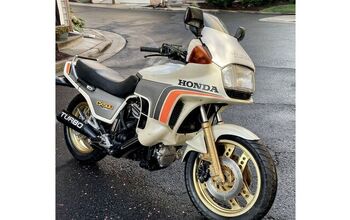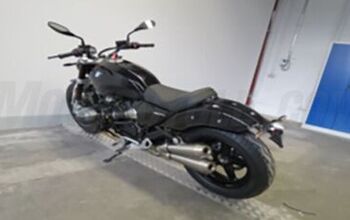First Ride: 2006 Kawasaki Ninja 650R - Motorcycle.com
Dec. 16, 2006 - San Diego County, CA - Does the world of motorcycling need another middleweight twin? The venerable SV650 from Suzuki has caused more than one manufacturer to take note of the success of this moderately displaced, mild mannered, fun loving, user friendly, commuter-cum-club racer bike user friendly, commuter-cum-club racer bike.
Unless your name is Rip Van Winkle, you've probably noticed their proliferation over the past six years.
With a long heritage of building light and middleweight twins, Kawasaki would answer the above question with a resounding "Yes."
Drawing on nearly twenty years of EX/Ninja 250 and 500 domination of the "cheap, light and fast" philosophy, Team Green has added yet another member to the ever-growing family of motorcycle assassins known as the Ninja. For 2006 they've unveiled what they hope will be a motorcycle for "all ages, riders and abilities", whether man or woman. That's a big spread in any endeavor but can the new Ninja 650R cover it?
When was the last time someone thought of you first when designing a product? According to Carl Edmondson, Sportbike Products Manager, Kawasaki did just that: "One thing that's unique about the Ninja 650R is the fact that the engineers took a completely different approach in the development of this model. Normally we're trying to figure out ways to make the motorcycle bigger, lighter, faster, etc. It's always about the motorcycle. But when the engineers set out to develop this bike they didn't start with the motorcycle in mind.
They actually started with the rider in mind." Calling the 650R "the perfect entry-level bike", Kawasaki most definitely has thought of the rider. Striving for ease of use, the Ninja applies some basics: a low 30" seat height, light weight, a narrow sensation thanks to a slim fuel tank and shorter distance between foot pegs, handlebars that keep the rider upright and an engine tuned for low to mid-range power.
"Two things capture the eye on this new twin: the smooth, sweeping bodywork with its subtle two-tone paint and the color matched forks, frame-with integrated "lay-down shock"--and the swingarm."
With the new or entry-level rider as their primary target, Kawasaki knows that "fun" is a key factor for people looking to make their first new bike purchase. Citing their own research on new riders, Kawasaki observed that buyers don't want their bikes to look entry-level; "They want their bikes to look like a premium sportbike." Applying styling cues from the "premium" Ninjas; designers did all they could to make it look as aggressive as possible.
Two things capture the eye on this new twin: the smooth, sweeping bodywork with its subtle two-tone paint and the color matched forks, frame-with integrated "lay-down shock"--and the swingarm. Adding to that aggressive look, the new Ninja sports six-spoke wheels and "petal" brake rotors directly from the ZX6 and ZX10 series. Front turn signals are integrated into the body panels and the headlight is sourced straight from the Z1000. A color-matched seat awaits the rider and once they're aboard they'll find the usual analog gauges and standard idiot lights. Nothing special here, just function.
What isn't so obvious to the onlooker is the muffler, but that's a good thing. Relocated from more traditional attachment points, the exhaust can is clandestinely located under the engine and blends seamlessly with the lower bodywork.
Not only does the "mid-ship" exhaust design add to the bike's "mass centralization and lower the COG", according to Kawasaki, it's also EPA friendly with its three-way catalytic converter. Kawi claims it exceeds strict Euro III emissions standards. Whatever it does, it looks great and even if the components were nothing more than a "parts bin" assemblage, Kawi would probably still sell thousands and thousands on looks alone.
The heart of this little beast is an all-new liquid cooled, 649cc, eight-valve, DOHC, parallel twin with liner-less-but plated-cylinders which have a narrow pitch and are bored out to an over square 83.0mm x 60.0mm. A cassette-style, six-speed transmission is made compact by way of a triangulated arrangement, just like on the ZX10 and includes a counter balancer. As part of this new engine design a semi-dry oil sump is used to allow for a shallower oil pan.
Fuel induction takes place thru twin 38mm Keihin throttle bodies that include sub-throttles designed to smooth out fuel injection and make riding easier for the new biker. Additionally an "Auto Fast Idle System" is designed for "quick firing and smooth idling, even when cold." What this all adds up to is an engine that is shorter, narrower and lighter and yet has 150cc more than the EX/Ninja 500. Kawasaki claims the bike to be the "most compact engine in the category." A clean slate was used in the chassis design. A high-tensile steel trellis frame with the engine as a stressed member and an integrated, offset, lay-down rear shock was utilized to keep the bike narrow between the knees and feet. With all this compactness going on in the engine and frame, the braced swingarm was made long-thanks again to tech borrowed from the other performance Ninjas, to help improve handling according to Kawasaki. The "petal" brake rotors are snatched right out from under the ZX6 and ZX10 models, while the calipers are of the two-piston, sliding pin type. Finally, the tires are Bridgestone 020s. In keeping with their "re-thinking" of this bike's design, Kawasaki engineers did a lot of analysis to determine how the rider interfaces with the motorcycle, "They studied different riding positions and tried to determine the best posture to instill the most confidence.", says Edmondson.
"I had plenty of opportunity to utilize the low to mid-range power."
One thing is for sure: the bike has as neutral a riding position as can be found. When you first sit on the new Ninja you immediately notice the low saddle height and relaxed seat to bar relation. Standing 5'8" I was comfortable but if I were taller I might have found the ergos to be a bit tight. Although it offers a huge amount of ground clearance, foot peg height may slightly cramp the style of riders over six feet tall.
Although no real wind buffeting occurred I would have preferred the windscreen be angled up to take some of the windblast of my upper body. With the steep, tight, twisting terrain of Palomar Mountain Road and the surrounding countryside I had plenty of opportunity to utilize the low to mid-range power. Torque becomes apparent as low as 2,500rpm but is most effective starting around 3,000rpm. Thanks to the excellent fuel injection and accessible mid-range power, modulating the throttle while in the middle gears is the best way to tackle tighter sections of the roadway. When sweeping turns start to appear so does the engine's fun zone, with the most entertaining place to have the engine spinning around the 6,500rpm. With the powerband coming on right around 7,000 rpm and fading seriously by approximately 9,500 to 10,000rpm, this new twin never feels peaky or "camy" like the EX500. Don't expect a rush of acceleration at any point in the rev range, just a very linear and tractable powerband with a little hot spot as mentioned above.
The 650R is by no means boring at the throttle but we have to consider that the primary target for this bike is either beginners or those with limited riding experience. Where the engine reveals its strength is at freeway speeds. Droning down the interstate between 70-80mph, the little Ninja that could spins at a leisurely 5,000rpm. Need to pass Mr. I'll-Drive-As-Slow-As-I-Want, in the fast lane?
The 650R obliges as it accelerates effortlessly in top gear roll-ons, with no flat spots or bogging before it decides to get out of its own way. That is an excellent trait to have for any bike looking to be a commuter champion. The clutch and transmission were flawless, so much so that I never thought about them.
More by Pete Brissette



























Comments
Join the conversation